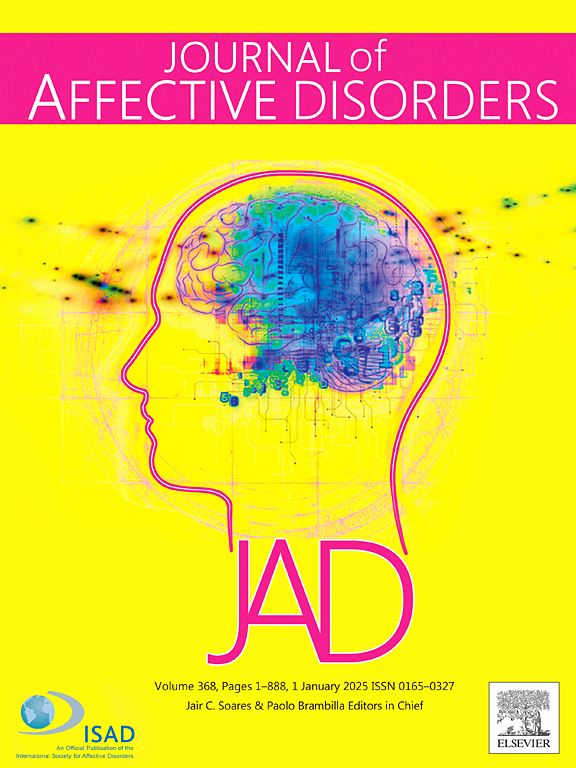Development and application of a machine learning-based antenatal depression prediction model
IF 4.9
2区 医学
Q1 CLINICAL NEUROLOGY
引用次数: 0
Abstract
Background
Antenatal depression (AND), occurring during pregnancy, is associated with severe outcomes. However, there is a lack of objective and universally applicable prediction methods for AND in clinical practice. We leveraged sociodemographic and pregnancy-related data to develop and validate a machine learning-based AND prediction model.
Methods
Data from 20,950 pregnant women form 3 hospitals were used and divided into training and test sets. AND was defined as an EPDS score of 10 or above. Using machine learning, we selected 34 characteristic variables and divided them into three categories based on clinical practice: Base Variables, General Variables, and Obstetric Variables. Based on this classification, we constructed four different AND random forest prediction models: the Base Model, the Base+General Model, the Base+Obstetric Model, and the Full Model.
Results
The AUC range in the test set was 0.687–0.710. The Base+General Model achieved the best performance with an AUC of 0.710 (95 % CI: 0.693–0.710) in predicting AND risk during the late pregnancy period. The AUC of the Base Model was only 0.022 lower than that of the top-performing model, indicating its solid foundation for early AND screening.
Limitations
We have only analyzed the dataset from two eastern cities, and have not yet validated our models in an external dataset.
Conclusions
Machine learning-based prediction models offer the capability to anticipate the risk of AND across different pregnancy stages. This enables the earlier and more accurate identification of pregnant women who may be at risk, facilitating timely interventions for improving outcomes for both mothers and their offspring.
求助全文
约1分钟内获得全文
求助全文
来源期刊

Journal of affective disorders
医学-精神病学
CiteScore
10.90
自引率
6.10%
发文量
1319
审稿时长
9.3 weeks
期刊介绍:
The Journal of Affective Disorders publishes papers concerned with affective disorders in the widest sense: depression, mania, mood spectrum, emotions and personality, anxiety and stress. It is interdisciplinary and aims to bring together different approaches for a diverse readership. Top quality papers will be accepted dealing with any aspect of affective disorders, including neuroimaging, cognitive neurosciences, genetics, molecular biology, experimental and clinical neurosciences, pharmacology, neuroimmunoendocrinology, intervention and treatment trials.
 求助内容:
求助内容: 应助结果提醒方式:
应助结果提醒方式:


